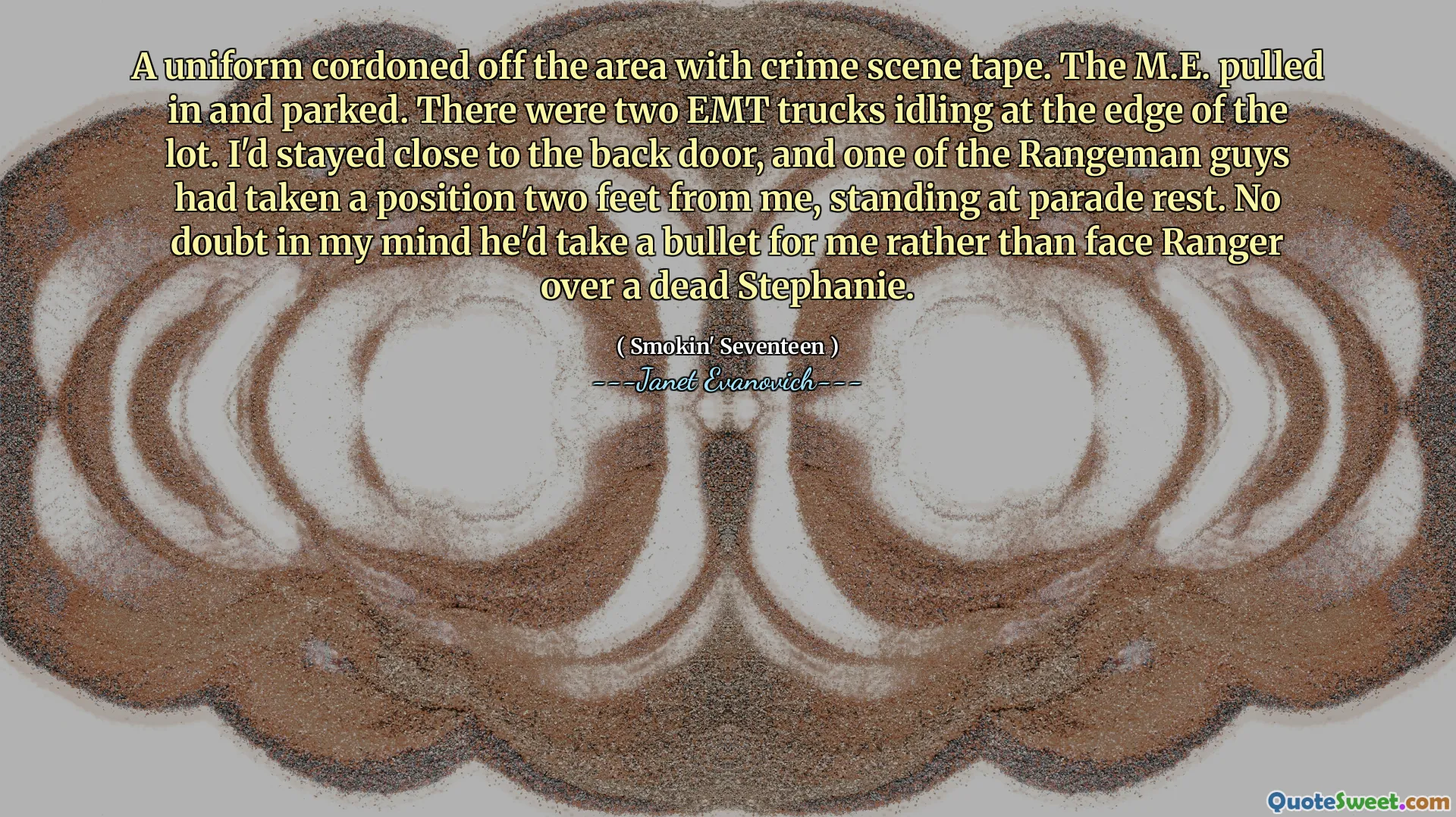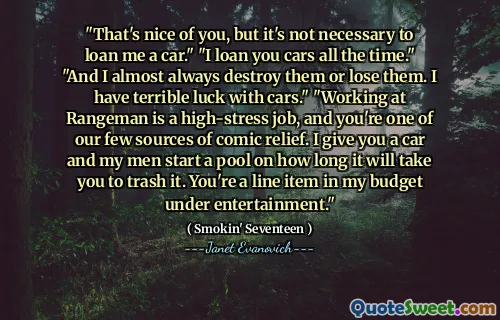
A uniform cordoned off the area with crime scene tape. The M.E. pulled in and parked. There were two EMT trucks idling at the edge of the lot. I'd stayed close to the back door, and one of the Rangeman guys had taken a position two feet from me, standing at parade rest. No doubt in my mind he'd take a bullet for me rather than face Ranger over a dead Stephanie.
This excerpt immerses the reader into a tense and emotionally charged scene, highlighting themes of loyalty, danger, and camaraderie. The description of a crime scene immediately seizes attention, painting a picture of underlying chaos and tragedy. The presence of first responders—the M.E. and EMT trucks—indicates that something serious has transpired, possibly a death or grievous injury. Yet amidst the disarray, the focus shifts to the people involved, especially the narrator and the Rangeman. Their proximity and body language reveal a deep bond—one built on trust and readiness to protect each other at all costs. The ranger standing at parade rest signifies discipline and alertness, embodying the readiness to face peril, including the threat of gunfire, to shield another. This scene encapsulates the essence of heroism—quiet, steadfast, and unwavering in the face of danger. It underscores the idea that in moments of crisis, true loyalty is tested and often revealed. The narrator’s confidence in the Rangeman guy’s willingness to risk his life underscores themes of friendship, valor, and the sacrifices made in law enforcement or emergency response roles. The scene overall builds tension, emotional depth, and admiration for those who serve and protect, subtly emphasizing the personal bonds that become even more vital amid tragedy. These moments remind us of the sacrifices essential to community safety, loyalty, and the human capacity for selflessness in dire circumstances. (From Smokin' Seventeen)







